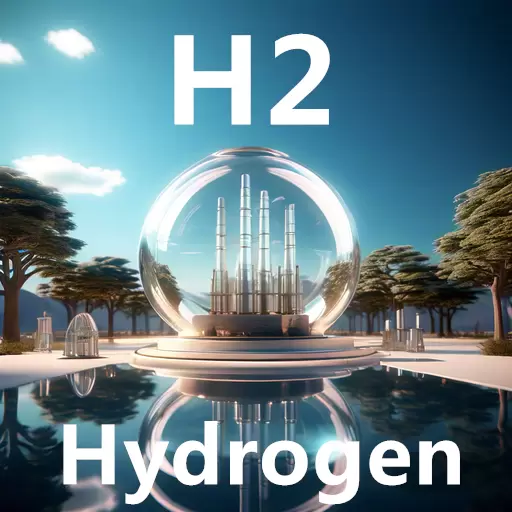The quest for cleaner and more efficient hydrogen production has led to significant research in improving SMR technology. Innovations aim to reduce carbon emissions and enhance the overall efficiency of the process, potentially transforming the landscape of grey hydrogen production.
Exploring alternatives to traditional SMR, such as autothermal reforming (ATR) and partial oxidation (POX), presents opportunities to produce grey hydrogen with lower environmental impacts. These technologies, though less mature, offer promising avenues for sustainable hydrogen production.
R&D plays a pivotal role in overcoming the technological and environmental hurdles associated with grey hydrogen. Investment in research is crucial for discovering new catalysts, improving process efficiencies, and ultimately making grey hydrogen a more viable energy source.

Grey hydrogen is extensively used in refining, fertilizer production, and chemical manufacturing. Its role in these industries underscores the importance of developing cleaner production methods to reduce the overall carbon footprint.
The energy transition towards sustainable sources puts grey hydrogen in a transitional role. By improving the sustainability of grey hydrogen or gradually replacing it with green alternatives, the industry can contribute significantly to achieving global climate goals.
Government policies and regulations are critical in shaping the future of hydrogen production. Incentives for green hydrogen, carbon pricing, and investment in carbon capture and storage (CCS) for grey hydrogen production are among the measures that can facilitate a shift towards a more sustainable hydrogen economy.
Understanding the differences between grey, green, and blue hydrogen in terms of environmental impact and production costs is essential for stakeholders. While grey hydrogen is currently the most cost-effective, its environmental drawbacks necessitate a transition to greener alternatives.
The hydrogen energy sector is at a crossroads, with the potential to significantly reduce global carbon emissions. The future will likely see a diversified hydrogen economy with an appropriate mix of grey, blue, and green hydrogen tailored to specific applications and regional resources.
Stakeholders across the hydrogen value chain, from producers to end-users, have differing perspectives on the role of grey hydrogen. Balancing these interests with environmental sustainability is a key challenge for the industry.
Several countries and regions lead in grey hydrogen production, driven by their natural gas resources and industrial demand. The strategies and policies adopted by these leaders can significantly influence global trends in hydrogen production.
Global cooperation is crucial for advancing hydrogen technologies and establishing standards that foster competition while ensuring environmental sustainability. International partnerships and agreements can accelerate the adoption of cleaner hydrogen production methods.
The global outlook for grey hydrogen is evolving, with a clear trend towards sustainability and reduced carbon emissions. How quickly and effectively the industry can adapt to these changes will determine the role of grey hydrogen in the future energy landscape.
The primary challenge for grey hydrogen remains its environmental impact. Reducing CO2 emissions from SMR processes is crucial for aligning grey hydrogen production with global climate objectives.
The economic viability of grey hydrogen is challenged by fluctuating natural gas prices and the potential costs associated with implementing CCS technologies or switching to alternative production methods.
Overcoming technological barriers to make grey hydrogen production more efficient and less carbon-intensive requires ongoing investment in research and development, as well as the deployment of new technologies.
Governments play a crucial role in shaping the hydrogen market through policies, subsidies, and regulations that encourage or mandate reductions in carbon emissions from hydrogen production.
International standards and agreements can help harmonize approaches to hydrogen production, ensuring that efforts to reduce carbon emissions are globally coordinated and effective.
Future legislation is likely to become more stringent regarding carbon emissions, pushing the hydrogen industry towards greener production methods. Keeping abreast of these changes is essential for stakeholders in the grey hydrogen sector.
Developing a sustainable approach to grey hydrogen production involves balancing economic, environmental, and technological factors. Innovations in production methods and policy support are key to this balance.
The debate surrounding grey hydrogen focuses on its environmental impact versus its role in the energy transition. Ethical considerations about long-term sustainability play a crucial role in this debate.
Technological innovations and policy measures are paving the way for a more sustainable future for grey hydrogen. Embracing these changes is essential for the industry's evolution.
What is grey hydrogen, and how is it produced?
Why is grey hydrogen considered environmentally damaging?
How does grey hydrogen compare to green and blue hydrogen?
What are the main applications of grey hydrogen?
Can grey hydrogen be made more environmentally friendly?
What is the future outlook for grey hydrogen production?
Summarizing the grey hydrogen dialogue reveals a complex landscape of challenges and opportunities. As the most common form of hydrogen production, its environmental impact is significant, but so is its potential for improvement. The path forward involves a concerted effort from industry, governments, and society to transition towards more sustainable hydrogen production methods. Grey hydrogen's role in this transition is pivotal, serving as a stepping stone to a cleaner, more sustainable energy future.

Submit your demand,
we will contact you ASAP.

Sanxin New Materials Co., Ltd. focus on producing and selling ceramic beads and parts such as grinding media, blasting beads, bearing ball, structure part, ceramic wear-resistant liners, Nanoparticles Nano Powder

